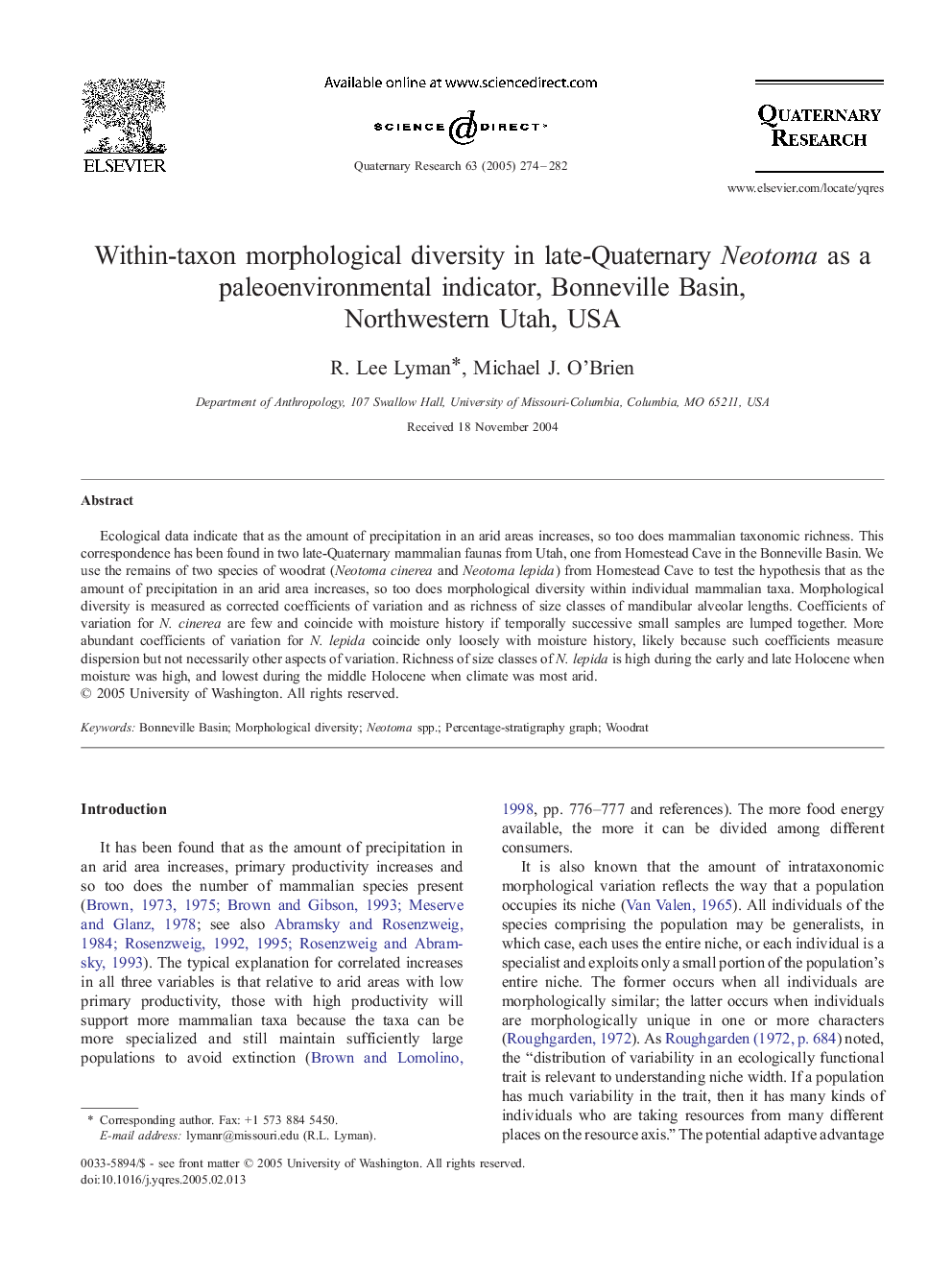| Article ID | Journal | Published Year | Pages | File Type |
|---|---|---|---|---|
| 10501649 | Quaternary Research | 2005 | 9 Pages |
Abstract
Ecological data indicate that as the amount of precipitation in an arid areas increases, so too does mammalian taxonomic richness. This correspondence has been found in two late-Quaternary mammalian faunas from Utah, one from Homestead Cave in the Bonneville Basin. We use the remains of two species of woodrat (Neotoma cinerea and Neotoma lepida) from Homestead Cave to test the hypothesis that as the amount of precipitation in an arid area increases, so too does morphological diversity within individual mammalian taxa. Morphological diversity is measured as corrected coefficients of variation and as richness of size classes of mandibular alveolar lengths. Coefficients of variation for N. cinerea are few and coincide with moisture history if temporally successive small samples are lumped together. More abundant coefficients of variation for N. lepida coincide only loosely with moisture history, likely because such coefficients measure dispersion but not necessarily other aspects of variation. Richness of size classes of N. lepida is high during the early and late Holocene when moisture was high, and lowest during the middle Holocene when climate was most arid.
Keywords
Related Topics
Physical Sciences and Engineering
Earth and Planetary Sciences
Geology
Authors
R. Lee Lyman, Michael J. O'Brien,
